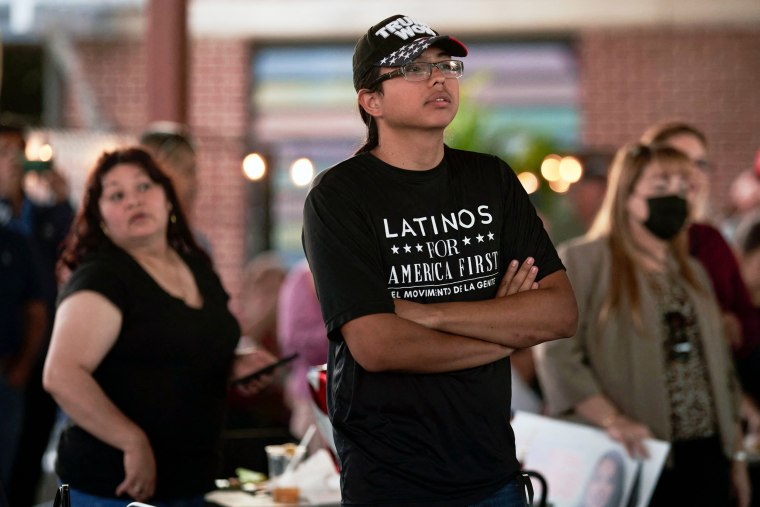Most Latinos voted for Democrats in last week’s elections. But Republican support among Hispanic voters has grown by 10 points since 2018, continuing a dozen-year trend of America’s largest ethnic minority group drifting in a more politically conservative direction. Though this shift has engendered much Democratic finger-pointing about potentially off-putting messaging (e.g., promotion of the term “Latinx”) and lack of outreach, the primary cause may be much simpler: namely, the rapidly improving socio-economic position of Latinos in America.
Latinos’ life expectancy in the U.S. exceeds that of whites by about three years. In the five years prior to the pandemic, Hispanic median household income grew more than twice as much as whites.
It follows that, just as people rarely consider quitting jobs or divorcing spouses that they like, they find political change unappealing when they are satisfied with their life situation. Political conservatism means just that — maintaining institutions and traditions — which helps explain why the wealthy vote more conservatively than the poor and the oppressed, who understandably long for change. There are certainly many Hispanic Americans who are poor and oppressed, but there’s considerable evidence that many are doing better than ever.
Start with health and upward mobility. Latinos’ life expectancy in the U.S. exceeds that of whites by about three years. In the five years prior to the pandemic, Hispanic median household income grew more than twice as much as whites and faster than Black and Asian Americans as well.
Both of these advantages are buttressed by Hispanic gains in education. According to the National Center on Educational Statistics, from 2010 to 2020, the high school dropout rate of Hispanics fell by more than half, from 15.1% to 7.4%, approaching the national average of 5.3%. And from 2000 to 2018, the college enrollment rate of Hispanics aged 18 to 24 increased by more than half, from 22% to 36%, also approaching the national average, which is 41%.
In this year’s entering class at the University of California, the largest racial and ethnic group is Hispanics. Some observers were surprised that more Latinos didn’t vote to restore affirmative action in the U.C. system, but if you are the largest group being admitted (36% of freshman), you will naturally be less likely to want to change the college admissions rules.
All of these successes have shaped Hispanics’ view of their country. A 2021 survey by Pew found that Latinos see the U.S. as offering more economic opportunity, better conditions for raising children and better access to health care services than the countries in which they were born or, in the case of U.S.-born Hispanics, in the countries in which their ancestors were born.
Progress for racial and ethnic groups isn’t measured only by the accrual of rewards, of course. Other important indicators include decreases in ill treatment. For example, a key contributor to the rising success of Asian Americans over the past century has been a decline in white Americans’ hostility toward them, whether expressed interpersonally or through punitive social policies.
One window into whether a similar change is happening for Hispanics is the criminal justice system, which has enormous power to maintain America’s racial and ethnic animosities. Even as recently as 2000, rates of being jailed, imprisoned, put on probation, paroled or subject to police violence were all dramatically higher among Hispanics than whites. Yet this is significantly less true today.
The rate of being imprisoned is still higher among Latinos than whites, but according to Bureau of Justice Statistics data, the rates of being jailed or placed on community supervision (probation or parole) are now almost identical for both groups. Meanwhile, Gallup poll data shows the proportion of Hispanics who say they have significant trust in the police (49%) is almost as high as whites (56%), versus only 27% of Blacks. And the number of police who are Hispanic increased 82% from 1997 to 2020.
Other factors may of course be moving some Latinos in a conservative direction, including how they appraise the two major political parties’ positions on immigration policy, social values and other issues. But it’s easy for political junkies to assume that most people follow political nuances closely, when in fact they don’t. Most people are driven by a more abstract sense of whether their lives and their country are doing well and should stay as they are or are doing badly and therefore need to change.
To recognize the influence of the above trends isn’t to deny that many Hispanics endure economic hardship, educational disadvantage and prejudice. But the overall arc of progress suggests that more Hispanics are going to be voting conservative in the future because they feel America is working out well for them.
